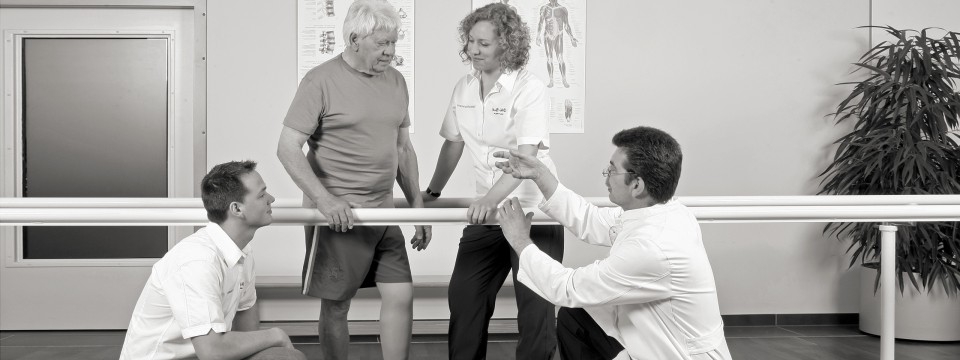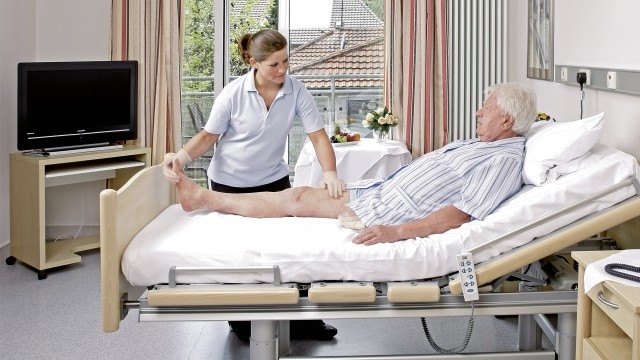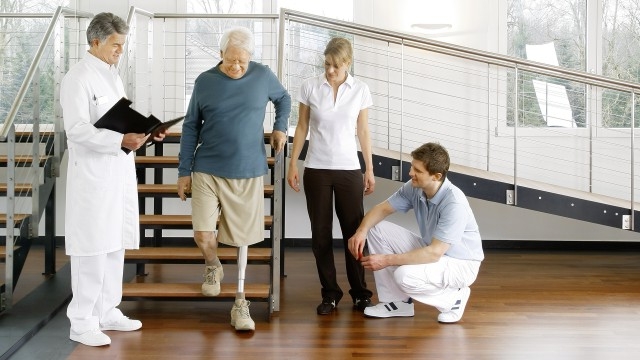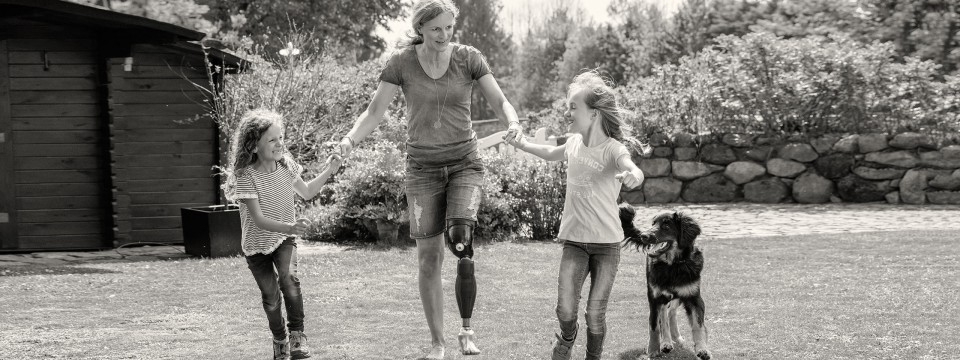
Amputation, rehabilitation and a new beginning with a prosthetic leg
After a profound procedure such as amputation of a leg, you find yourself confronted with difficult new challenges, worries and hardships. It is important to us to stand by you and your fellow man during this time. We will help you to overcome the new hurdles of the coming weeks and months.
Once you have recovered mentally and physically from the traumatic experience of amputation, participation in life becomes important. What does that mean for you? Is it possible to return to your job? Would you like to continue your usual sport? Or are new opportunities to interact with the world opening up? Maybe security and stability are most important to you right now? The needs to which a leg prosthesis is tailored are as individual as lives perception. Regardless of whether it is your first or you are already an accomplished wearer of prosthetics.
Find out here what types of prostheses are available and how you can integrate them into your new life. Your orthopedic technician will be happy to advise you.
Preparations for an amputation
Perhaps you have known about an upcoming amputation for some time. Even if this prospect weighs on you, you are not alone. We support you in preparation for this serious procedure. Here we shed light on what to expect, who will look after you and how to proceed afterwards.
Choose your specialist
Perhaps you didn’t know, you have a say in who performs the procedure. The coordinating orthopedic technician is one of the most important people who are part of your care team before, during and after an amputation. Treatment by experienced specialists is of great importance. Below is an overview of the most important parties involved.
Your care team

Experts from different disciplines are entrusted with your care before, during and after a leg amputation. Find out which specialist can help you and how.
The surgeon
If possible, a good surgeon will coordinate with your orthopedic technician before an amputation. He will advise you and carry out the operation. Coordination with the orthopedic technology department makes it easier to produce your prosthesis to fit perfectly. After the amputation, the surgeon observes the healing process and approves your rehabilitation measure.
Inpatient nursing staff
In the hospital, you will be looked after by specialized staff who have an eye on dressing and alignment for rapid wound healing. Holistic care is closely coordinated with doctors, therapists and orthopedic technology.
Your general practitioner and specialist
As a rule, your general practitioner and specialist looked after you in advance of an amputation and is prepared accordingly. He accompanies you during further rehabilitation and prescribes new prostheses or their adaptation.
Social services and social educators
For a smooth connection to social life, such as work, accommodation, family and friends, employees of social services are already available in the clinic. They give you an overview of services such as special and curative educational or social supportive measures.
Occupational therapists and physiotherapists
In addition to compression therapy in the clinic, occupational therapists and physiotherapists will help you with your rehabilitation and in everyday life. They work with you on more mobility and flexibility by stretching and strengthening your muscles.
The orthopedic technician
You will receive your perfectly fitting prosthesis from your orthopedic technician. He accompanies you from the beginning of the process and, in the best case, coordinates with the surgeon about the design of your residual limb. Do you need information on converting your apartment or car? Are you looking for an experienced therapist, an orthopedic schumacher or a connection to other people with amputations? Ask your orthopedic technician.
When choosing the right prosthesis, discuss your wishes and needs with your orthopedic specialists. After examining your residual limb and, if necessary, producing an interim prosthesis, your individual prosthesis will be made from suitable prosthesis components.
The orthopedic schumacher
In some cases, such as a circulatory disorder, you need suitable shoes to keep your healthy foot intact. The use of orthopedic footwear may also be advantageous in the case of a partial foot amputation. Alternatively, partial foot prostheses are available. If you have any questions, please contact your orthopedic technician.
The outpatient nursing staff
Everyday mobility, handling the prosthesis and compression is supported by outpatient nursing staff.
After an amputation

Wound healing and your recovery are top priorities after an amputation. Only then can you begin your rehabilitation measure and receive a prosthesis. It is important that you start rehab if:
- You have a pain-free stump
- the stump is resilient
- Swelling and water retention have subsided
- mobility of the residual limb in all directions is possible
How long it takes before you can wear a prosthesis and start rehab depends on the individual situation. If you actively participate, you can restore mobility in the run-up to rehab. With stamina and perseverance, you can get a prosthesis all the faster and shape your life anew.
Your orthopedic technician can work with you during your hospital stay to find a suitable rehabilitation facility that specializes in amputations.
The rehabilitation

The rehabilitation phase begins a few weeks after the wound has healed. Their duration is usually measured at up to six months and is carried out on an inpatient or outpatient basis. For rehab, at best, you have chosen a special clinic for amputations.
During the rehabilitation phase, you will be accompanied by a group of specialists consisting of doctors, wound managers, sports medicine specialists, occupational therapists and physiotherapists. The intensity of the rehabilitation depends on the level of your recovery. Normally you can expect daily walking exercises, occupational therapy, sports therapy as well as massages, baths and the like. Individual units usually last 30 minutes, the daily program amounts to three to four hours with breaks. So that you can get back to life as quickly as possible, active participation is crucial. You can request support from a psychologist who can also help you change your habits. Family help can also help you in everyday life.

